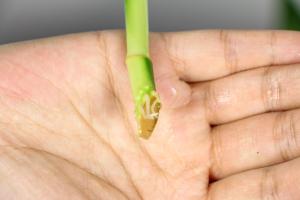How to Grow Indoor Plants in Pots
Growing indoor plants in pots is an excellent way to add a touch of nature to your home decor, improve air quality, and reduce stress levels. Whether you are a seasoned gardener or a beginner, growing indoor plants in pots is a fun and rewarding experience. Here are some tips to help you get started:
Select the Right Pot
The first step in growing indoor plants in pots is to select the right container. The size of the pot should be proportional to the size and growth habits of the plant. You should also consider the material of the pot - terracotta, ceramic, and plastic are popular options. Lastly, ensure that the pot has drainage holes at the bottom to prevent waterlogging.
Pick the Right Soil
The soil you choose for your indoor plant is crucial to its growth and success. Choose a well-draining soil mix that is rich in nutrients and suitable for the specific plant. Before planting, moisten the soil to make it easier to work with.
Choose the Right Plant
Not all plants are suitable for growing indoors. Some plants need more sunlight, humidity, and space than others. When selecting a plant for indoor gardening, consider the following factors – available light, water and humidity requirements, and the temperature and airflow in your home.
Provide Adequate Lighting
Light is essential for plant growth, and indoor plants require at least 6-8 hours of sunlight each day. If your home doesn't have enough natural light, supplement it with artificial light. LED grow lights are energy-efficient and come in a spectrum that's ideal for plant growth. You can use them in combination with natural light to create the perfect environment for your plant.
Water Your Plant Correctly
Watering your indoor plant correctly is crucial to its growth and success. Overwatering can be as harmful as underwatering, so be sure to water your plant only when the top layer of the soil feels dry to the touch. Avoid getting water on the leaves as it can cause fungal growth and diseases. Use lukewarm water, and if you're unsure how much water your plant needs, do some research on the specific plant's requirements.
Fertilize Regularly
Plants need nutrients to grow, and indoor plants in pots need them even more than outdoor plants. Use a slow-release fertilizer that is high in nitrogen, phosphorus, and potassium, which are essential for plant growth. Feed your plant every two to four weeks during the growing season, and reduce or eliminate fertilizing during the dormant season.
Monitor Your Plant's Growth
Monitoring your indoor plant's growth is an essential part of indoor gardening. Observe your plant's leaves, stems, and soil for signs of stress, pests, and disease. Adjust your watering, fertilizing, and lighting practices as your plant grows and adapts to its environment.
Conclusion
Growing indoor plants in pots can be a fun and rewarding experience, bringing a touch of nature into your home. By selecting the right pot, soil and plant, providing adequate lighting and water, and fertilizing regularly, your indoor plants will thrive and contribute to a healthier, happier living space.

 how many times do yo...
how many times do yo... how many planted tre...
how many planted tre... how many pine trees ...
how many pine trees ... how many pecan trees...
how many pecan trees... how many plants comp...
how many plants comp... how many plants can ...
how many plants can ... how many plants and ...
how many plants and ... how many pepper plan...
how many pepper plan...






























